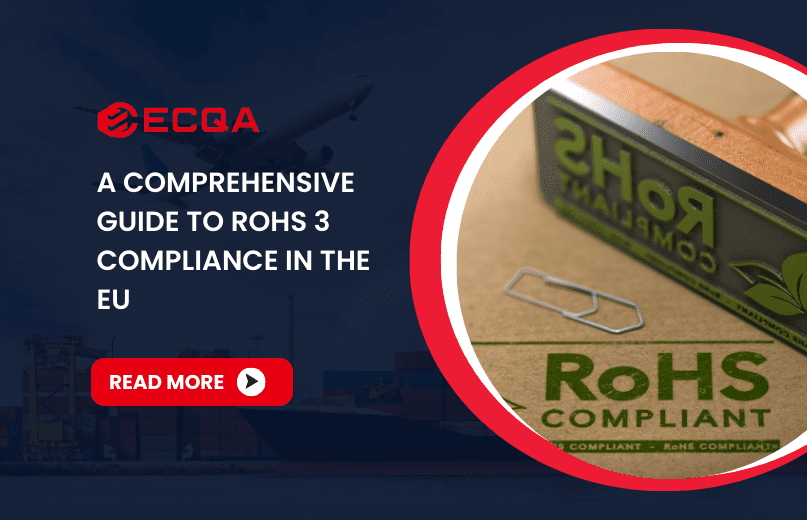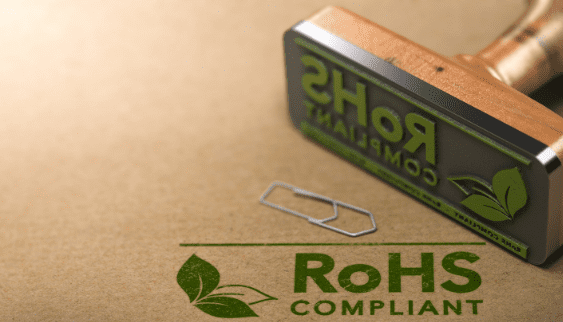
Understanding RoHS 3

The global push for environmental sustainability has led to strict regulations on hazardous substances in manufacturing, and one of the most critical directives in this space is RoHS (Restriction of Hazardous Substances). Whether you’re a manufacturer, importer, or retailer, understanding RoHS is essential to ensuring compliance and maintaining market access.
RoHS regulations primarily affect electrical and electronic equipment (EEE), limiting the use of toxic substances like lead (Pb), mercury (Hg), cadmium (Cd), and other harmful materials. Initially enforced in the European Union (EU), RoHS has since influenced similar laws worldwide, making it a global standard for environmentally responsible manufacturing. In this guide, we’ll dive deep into everything you need to know about RoHS.
What is RoHS?
The Restriction of Hazardous Substances (RoHS) Directive is a critical regulation designed to reduce environmental pollution and protect human health by limiting the use of specific toxic materials in electrical and electronic equipment (EEE). Originally introduced by the European Union (EU) in 2003, RoHS has since become a global benchmark for hazardous substance restrictions in manufacturing.
Understanding the Purpose of RoHS
At its core, RoHS exists to eliminate dangerous chemicals that can leach into the environment when improperly disposed of. E-waste (discarded electronics) is one of the fastest-growing waste streams in the world, and without regulation, toxic substances from these products can contaminate water, soil, and air, posing serious risks to humans, wildlife, and ecosystems.
By enforcing strict limits on hazardous materials, RoHS aims to:
- Protect public health from exposure to harmful chemicals.
- Reduce electronic waste pollution and its environmental impact.
- Promote safer manufacturing practices and encourage innovation in materials science.
- Ensure a uniform regulatory framework for manufacturers selling products in the EU.
What Products Fall Under RoHS?
RoHS applies to a wide range of electronic and electrical products, including but not limited to:
- Consumer electronics (smartphones, laptops, TVs)
- Household appliances (refrigerators, microwaves, vacuum cleaners)
- Industrial equipment (control panels, power tools, automation systems)
- Medical devices (MRI machines, pacemakers, diagnostic tools)
- Lighting products (LED bulbs, fluorescent lamps)
- Cables and connectors used in electrical equipment
Any business involved in manufacturing, importing, or distributing electronics within RoHS-regulated markets must ensure strict compliance with the directive. Failure to do so can result in heavy fines, product recalls, and legal bans.
The Evolution of RoHS: RoHS 1, RoHS 2, and RoHS 3
Since its inception, RoHS has undergone multiple revisions to strengthen its environmental impact and adapt to technological advancements. The directive has evolved through three major phases: RoHS 1 (2003), RoHS 2 (2011), and RoHS 3 (2015). Understanding these changes is crucial for businesses striving to maintain compliance and stay ahead of regulatory updates.
RoHS 1: The Original Directive (2003/2006)
The original RoHS directive (2002/95/EC) was adopted by the European Union in 2003 and officially enforced on July 1, 2006. This regulation marked the beginning of a global movement to restrict hazardous substances in electrical and electronic equipment (EEE).
Key Features of RoHS 1:
- Restricted six hazardous substances in electronic products:
- Lead (Pb)
- Mercury (Hg)
- Cadmium (Cd)
- Hexavalent Chromium (Cr6+)
- Polybrominated Biphenyls (PBBs)
- Polybrominated Diphenyl Ethers (PBDEs)
- Applied to consumer electronics, home appliances, and industrial equipment.
- Required manufacturers to eliminate or significantly reduce these substances.
- Covered all products placed on the EU market, regardless of manufacturing location.
RoHS 1 was a game changer, forcing manufacturers to find alternative materials and implement greener production processes. However, as technology evolved, so did the need for stricter regulations, leading to RoHS 2.
RoHS 2: The Enhanced Directive (2011/2013)
Recognizing gaps in the original regulation, the EU introduced RoHS 2 (2011/65/EU) on July 21, 2011. This revision built upon RoHS 1 by expanding the scope, improving compliance mechanisms, and clarifying requirements for manufacturers.
Key Enhancements in RoHS 2:
- Expanded product scope to include medical devices, monitoring and control instruments, and other electronics previously exempt.
- Stronger enforcement with CE marking requirements—manufacturers now had to prove compliance through detailed documentation.
- Obligations for the entire supply chain, including importers and distributors, ensuring traceability.
- Introduced restricted substance review, allowing the EU to add more chemicals to the list over time.
RoHS 2 was a significant upgrade, making compliance more structured and enforceable. However, the rapid advancement of electronics led to another revision—RoHS 3.
RoHS 3: The Latest Update (2015/2019)
The most recent revision, RoHS 3 (Directive 2015/863/EU), came into effect on July 22, 2019, further tightening restrictions on hazardous substances in electronics.
Key Updates in RoHS 3:
- Added four new restricted substances, bringing the total to ten:
- Bis(2-ethylhexyl) phthalate (DEHP)
- Benzyl butyl phthalate (BBP)
- Dibutyl phthalate (DBP)
- Diisobutyl phthalate (DIBP)
- Extended compliance requirements to all electronic products, including cables and spare parts.
- Maintained previous substance restrictions, reinforcing supply chain transparency.
RoHS 3 marked a crucial shift towards stricter material compliance and sustainability in electronics manufacturing. As environmental concerns grow, future updates may introduce even more restricted substances and expand compliance expectations worldwide.
The 10 Restricted Substances Under RoHS
RoHS regulations focus on eliminating or reducing hazardous substances found in electrical and electronic equipment. Initially, the directive restricted six substances, but with the introduction of RoHS 3 (Directive 2015/863/EU), the list expanded to ten. These substances are known to pose serious environmental and health risks, particularly when products reach the end of their lifecycle and become electronic waste.
Understanding the Health and Environmental Impact
Each of these substances is toxic in varying degrees, with some causing severe health complications, environmental pollution, and long-term ecological damage. Many of them are found in common electronics, including circuit boards, batteries, wiring, and coatings. Improper disposal leads to the release of these chemicals into soil, water, and air, impacting both human and animal life.
Below is a detailed breakdown of the 10 restricted substances, their common applications, and why they are regulated.
The RoHS Restricted Substances and Limits
| Substance | Maximum Allowable Limit | Common Uses | Why It’s Restricted |
| Lead (Pb) | 0.1% (1000 ppm) | Solder, batteries, cables, circuit boards, glass | Highly toxic, causes neurological damage, developmental disorders, and reproductive issues |
| Mercury (Hg) | 0.1% (1000 ppm) | Switches, relays, LCD screens, batteries, lamps | Damages the nervous system, bioaccumulates in aquatic life, causes environmental contamination |
| Cadmium (Cd) | 0.01% (100 ppm) | Rechargeable batteries, pigments, coatings, contacts | Carcinogenic, affects kidney function, causes severe soil and water pollution |
| Hexavalent Chromium (Cr6+) | 0.1% (1000 ppm) | Corrosion-resistant coatings, pigments, dyes | Causes lung cancer, skin irritation, and groundwater contamination |
| Polybrominated Biphenyls (PBBs) | 0.1% (1000 ppm) | Flame retardants in plastics, electronic casings | Persistent organic pollutants, disrupt endocrine function, cause reproductive harm |
| Polybrominated Diphenyl Ethers (PBDEs) | 0.1% (1000 ppm) | Flame retardants in circuit boards, casings, insulation | Toxic to humans and wildlife, bioaccumulates, disrupts hormone balance |
| Bis(2-ethylhexyl) phthalate (DEHP) | 0.1% (1000 ppm) | Plasticizers in cables, vinyl coatings, medical devices | Endocrine disruptor, linked to reproductive toxicity |
| Benzyl butyl phthalate (BBP) | 0.1% (1000 ppm) | Plastics, adhesives, sealants | Causes developmental disorders, hormonal imbalances |
| Dibutyl phthalate (DBP) | 0.1% (1000 ppm) | Cable insulation, paints, glues | Affects fertility, disrupts the endocrine system |
| Diisobutyl phthalate (DIBP) | 0.1% (1000 ppm) | Circuit boards, adhesives, coatings | Toxic to reproduction, disrupts hormonal activity |
While RoHS specifically targets hazardous substances in electronic devices, it’s often discussed alongside REACH. Here’s a detailed look at the differences between REACH and RoHS and what they mean for manufacturers.
Ensure Your Products Meet RoHS Standards
Navigating RoHS compliance is crucial for your business, but achieving it requires thorough testing and verification. Explore our comprehensive product testing services to ensure your products meet all RoHS requirements and stand out in the EU market. Our expert team is here to help you with accurate, reliable testing and compliance solutions. For a better understanding of what product compliance entails, please read our article on Product Compliance.
Frequently Asked Questions About RoHS Compliance
1. What is RoHS compliance?
RoHS compliance means that a product meets the restrictions on hazardous substances set by the RoHS directive. This ensures that electrical and electronic equipment does not contain harmful levels of restricted materials, making them safer for human health and the environment.
2. Which substances are restricted under RoHS?
The RoHS directive restricts ten hazardous substances, including lead, mercury, cadmium, hexavalent chromium, polybrominated biphenyls (PBBs), and polybrominated diphenyl ethers (PBDEs). It also limits four types of phthalates: DEHP, BBP, DBP, and DIBP. These substances are restricted due to their toxic effects on humans and their environmental impact.
3. Which products must comply with RoHS?
RoHS applies to electrical and electronic equipment, covering a wide range of products such as consumer electronics, household appliances, medical devices, lighting, cables, and circuit boards. Any electronic product sold in regions that enforce RoHS regulations must meet these compliance requirements.
4. Who needs to comply with RoHS?
Manufacturers, importers, and distributors of electronic and electrical products that are sold in RoHS-regulated markets, such as the European Union, the United Kingdom, China, and California, are responsible for ensuring compliance. Failure to do so can result in legal and financial consequences.
5. What happens if a company fails to comply with RoHS?
Non-compliance with RoHS can lead to significant consequences, including fines, legal penalties, product recalls, and even market bans. It can also damage a company’s reputation and impact customer trust, making it essential for businesses to stay compliant.
6.What is the difference between RoHS and REACH?
RoHS and REACH both regulate hazardous substances, but they serve different purposes. RoHS focuses on restricting specific hazardous substances in electrical and electronic products. REACH, on the other hand, applies to a broader range of products and regulates the use of chemicals in general, including substances used in manufacturing and industrial processes.
7. How can a company obtain RoHS certification?
To obtain RoHS certification, companies must test their products for restricted substances and provide documentation proving compliance. The process typically involves working with an accredited third-party testing laboratory, conducting material analysis, and preparing a technical file with declarations of conformity. For expert guidance on achieving RoHS compliance and certification, businesses can contact ECQA.

 Request Free Sample Report
Request Free Sample Report